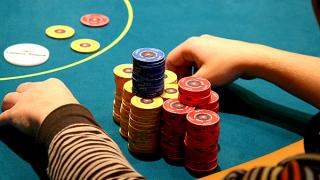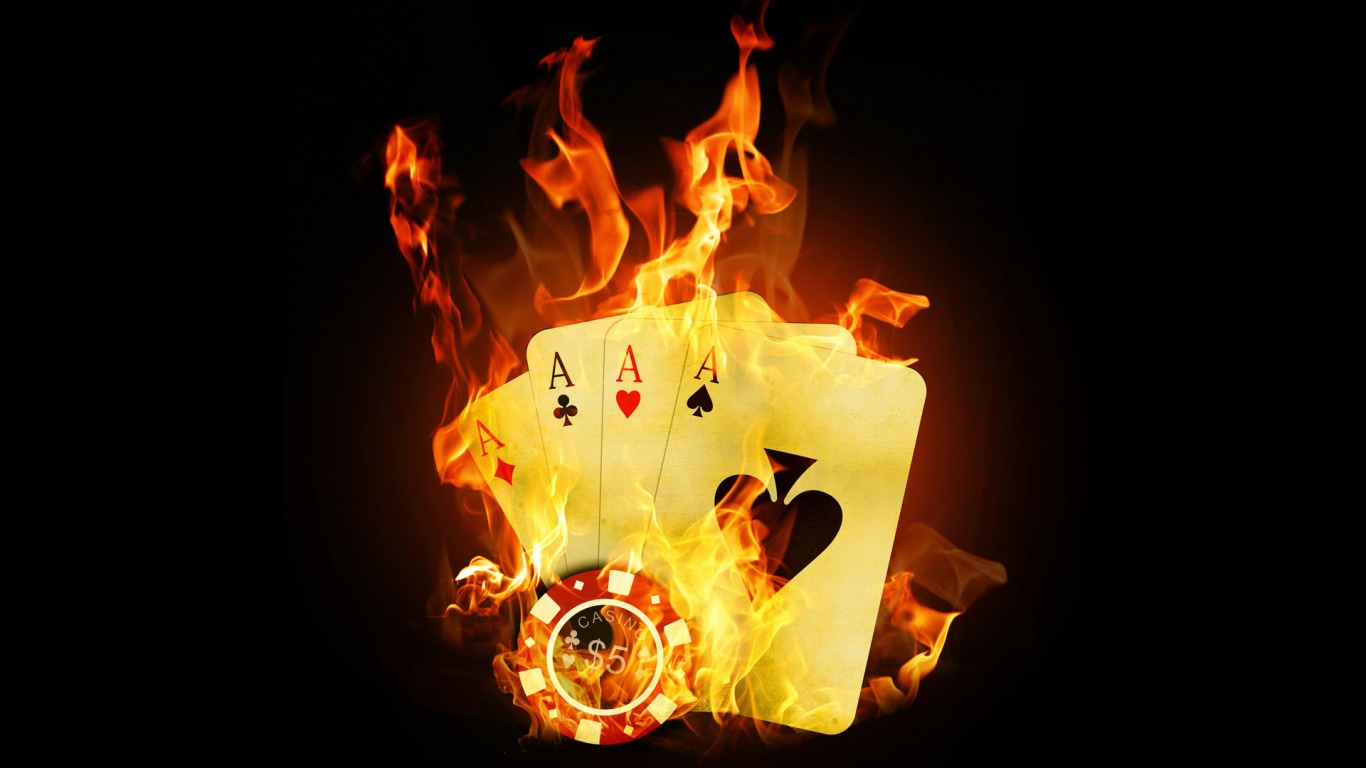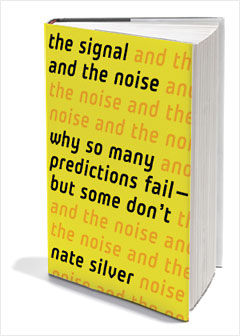 The lower limits, it is conventionally accepted that the preflop aggressor should always make a bet Continuation (C-bet) in a pot that is opposed to an opponent. In the forums, you will find many topics titled: Should I make a continuation bet here? And the standard answer is often: Heads-up? Yes, always. 2 opponents? Yes, sometimes in position.
The lower limits, it is conventionally accepted that the preflop aggressor should always make a bet Continuation (C-bet) in a pot that is opposed to an opponent. In the forums, you will find many topics titled: Should I make a continuation bet here? And the standard answer is often: Heads-up? Yes, always. 2 opponents? Yes, sometimes in position.By Bilbo-san Source: 2 +2 Forum
Translated by Thomas 'PokerEven' - www.pokereven.blogspot.com
There are several factors to analyze when it comes time to make a continuation bet:
- The value of your hand
- If you have restarted in flight position
- If a check / raise will put you in a difficult position
- If not bet facilitates decision or if your opponent bet facilitate its decision on the turn and river
- Your position
- If the pot has been reraised preflop
Introduction
The lower limits, it is conventionally accepted that the preflop aggressor should always make a bet Continuation (C-bet) in a pot that is opposed to an opponent. In the forums, you will find many topics titled: Should I make a continuation bet here? And the standard answer is often: Heads-up? Yes, always. 2 opponents? Yes, sometimes in position.
I think there are two reasons for the popularity of the continuation bet (C-bet). First, it facilitates decision making: preflop raise, making his C-bet, take the pot or fold on a check / raise. Or, to be followed and then having to negotiate a big pot with a beautiful hand, a situation where decisions are usually pretty easy.
On the other hand, as almost all C-Bet performed with a hand touched hand wins the pot, most players think that the choice of their action was correct. After all, they won the pot, is not it? But things are not so simple ... Maybe could we win a bigger pot, can we just got lucky and made a bet that will be incorrect 90% of the time but this time is spent in remaining 10% ...
Some things have changed my mind about C-bet. Especially when you progress through the boundaries, players become more cunning (but not necessarily good: there are good and bad players "tricky"). They will make check / raise more regularly and with a wider range of hands. Bad players then they will not should with hands like "top pair - bad kicker" underpairs or second pair; good players, meanwhile, will this kind of "move" with their monsters, their big prints or overpairs. Anyway, the more you progress within, the more aggressive players will increase and you will be attentive to the opportunity to do a C-bet.
I think there are some factors to consider before making a C-bet against a single opponent. For the future, for the sake of simplicity, we will assume that we have a mouse 100 BB and the pot is between 7 and 10 BB
I) The value of your hand
After the flop, we will look if you have a made hand, a draw (high or low) or absolutely nothing.
Made hands
Whenever you have a made hand, you should think about the best way to extract the most value against a worse hand. In some cases, of course, this is not realistic (go to showdown each time with 22 unimproved on any table is probably not a great idea)
With strong hands, the best way to extract the value of the bet. A ![]()
![]() K
K ![]()
![]() on a flop of A
on a flop of A ![]()
![]() 9
9 ![]()
![]() 7
7 ![]()
![]() For example, a flop is to be wagered. Do it on every flop of this type, especially those where you hit the ace with a good kicker and who offers prints.
For example, a flop is to be wagered. Do it on every flop of this type, especially those where you hit the ace with a good kicker and who offers prints.
However, there are strong hands that you should consider checker occasionally. For example you have A ![]()
![]() K
K ![]()
![]() . A C-bet on the flop A
. A C-bet on the flop A ![]()
![]() 7
7 ![]()
![]() 2
2 ![]()
![]() that offers no sleep will draw hands that have found a pair but do not have. If you have KK on the same flop, you have exactly the same problem (yes, KK here remains a strong hand). Very often, the best way to earn more in these situations will checker on the flop, especially if you have position, to try to avoid an additional bet from your opponent on the next card.
that offers no sleep will draw hands that have found a pair but do not have. If you have KK on the same flop, you have exactly the same problem (yes, KK here remains a strong hand). Very often, the best way to earn more in these situations will checker on the flop, especially if you have position, to try to avoid an additional bet from your opponent on the next card.
The best way to enhance the average hands, by cons, is never obvious. Take, for example, 8 ![]()
![]() 8
8 ![]()
![]() Table 4
Table 4 ![]()
![]() 5
5 ![]()
![]() 9
9 ![]()
![]() . Obviously, there are some less good hands here likely to follow a C-bet (67 in color) and there are many cards that could fall on the turn that you do not want to see. In general, if your opponent folds here, you were heavily favored (2 or 3): 1. Another problem: many hands likely to follow you will not only equalize but you will revive. Make a C-bet with an average hand will depend very much on the flop texture and style of your opponent; so be careful when you trade this kind of pot.
. Obviously, there are some less good hands here likely to follow a C-bet (67 in color) and there are many cards that could fall on the turn that you do not want to see. In general, if your opponent folds here, you were heavily favored (2 or 3): 1. Another problem: many hands likely to follow you will not only equalize but you will revive. Make a C-bet with an average hand will depend very much on the flop texture and style of your opponent; so be careful when you trade this kind of pot.
Prints
There is a very good chapter on how to play the prints in the book of Miller and Sklansky Theory of Poker. I will not repeat all that is written, but the point is that if your drawing does not give you the best game if you hit or if your hand is weak, you should be more inclined to bet on the flop, because you will be satisfied with the pot now as if your draw is low, if you have little chance to hit or if, once you get hit, it does not necessarily give you the best game you could lose lot of money (or do not earn much more against weak hands).
Examples of rather small print that you should bet:
- 2 overcard on the flop (this is sometimes the best hand, yes, but hey you only have 6 outs to make a hand made)
- Ventral straight draw (if you get a good% cumulative with rare times you hit your draw pulling, you will have a positive expected gain in this situation)
- The colors on a small table with a pair prints (if you hit your flush, you will normally action by players with the nut flush or full house, unless the players are very loose, it that should make your decision easier)
- Draw more on a bilateral two-tone flop (if you touch more on a card making go color, you probably will not have much action, if you, your opponent will often hit color, simply ).
Obviously, you will also build on your very large prints as:
- 2 overcards + the nut flush draw,
- + Color print after print bilateral,
- Pair + flush draw (If your pair is ace, you should probably rather checker since often you get the best game and that it is obviously not vulnerable to flush draw ...).
With a low draw, you must be on the lookout for an opportunity to lay the hand of your opponent with possibly a second attack. Make sure you know your opponent or have a clear idea of his game for this type of action.
Absolutely nothing
Unless you decide to completely abandon the pot or you think a bluff on the turn or river will be more effective, I think you should always perform a C-bet when you have absolutely nothing touched on the flop. You probably wrest the pot often enough to have a positive expected gain and this is a very good reason that should prompt you to restart a wide range of hands preflop.
II) If you raised in flight position against the blinds
Players in this situation you will probably less credit and will follow with lighter hands (so you can easily enhance your average hands). They could also be more often tempted by a check / raise, making it difficult to play your small or medium hands.
Once again, the range of hands your opponent in this situation as well as his perception of your own range of hands should influence your decision to do or not to do a C-bet, call or not his check / raise, d perform a second attack or not, etc.. (Invest in a program like PokerTracker will help you learn about the playing style of your opponents)
III) If a check / raise will put you in a difficult position
If you have 3 ![]()
![]() 3
3 ![]()
![]() Table A
Table A ![]()
![]() 3
3 ![]()
![]() 6
6 ![]() and that recovery is on your C-bet, you probably bondirez front of your screen.
and that recovery is on your C-bet, you probably bondirez front of your screen.
If you are holding A ![]()
![]() 7
7 ![]()
![]() on the same table, it is already so hot. And if you had K
on the same table, it is already so hot. And if you had K ![]()
![]() K
K ![]()
![]() , What would you do?
, What would you do?
Note that these hands have a very good prospect of winning against the flush draw, but A7 and KK are found in big trouble against most aces ..
In general, you really do not want to be put in the position where your hand is probably the best but you would be tempted to go to bed because you might be crushed and lose big. So before making a C-bet, check whether your decision will be easy if you check you raiserait.
Note that in many cases, the action at the turn significantly changes things. Some players try to do a check / raise a second time and they generally will not bluff (Most who try to bluff will build directly on the turn and will not try again check / raise). So if the shot is up to you to turn checker, you can safely make a value bet and throw your hand if your opponent makes a second check / raise.
If your opponent bets on the turn, your hand will still often the best (since your opponent will bluff a good% of time or build on a draw became weak with only one card to come)
If you ever checked KK on the flop before, resist the temptation to slow-play if, in turn, you get three of a kind: your opponent will sometimes playing semi bluff or do not want to let her have given action generated flop and thus be tempted to call a raise.
IV) Make it easy for you to play for Joe Tag or Mac Donkey shot?
A return to our flop ![]()
![]() 7
7 ![]()
![]() 2
2 ![]()
![]() . 'll Find this one very easy to play for these two types of opponent if you make a big C-bet. They probably throw their hand if they have no aces. And unless you have nothing in hand or a set, you make the shot too easy to play and you will not gain anything more. This is especially true if you have the position.
. 'll Find this one very easy to play for these two types of opponent if you make a big C-bet. They probably throw their hand if they have no aces. And unless you have nothing in hand or a set, you make the shot too easy to play and you will not gain anything more. This is especially true if you have the position.
However, here, there will be some made hands (33-66) that will motivate a C-bet, but other hands like 99-KK and weak as must not make things easier for their opponents who do not have as by a C-bet. Check for these hands is probably favorable to try to extract more money on the next card.
V) Are you in position?
Paradoxically, in a pot between me one opponent, I prefer not to have the position with my hands do. Since it is harder to recognize courses average hands (and easier to get bluff), win the pot immediately on a C-bet is a good result compared to the risk of obtaining a second successful implementation of our our average opponent with either hand had a nice value bet or hitting a wall showdown.
VI) Is it a pot on raised?
You should not always bet on the flop when the pot has been reraised preflop. If you have a monster hand, the pot is big enough to try to force your opponent to bet. On the other hand, in a pot on raised, your bet will be followed by a very small range of hand. This is perfect if you have nothing at all, a set, or AA on the flop 7 ![]()
![]() 4
4 ![]()
![]() 3
3 ![]()
![]() ; By cons, it can become problematic to manage if, with KK in hand, the flop Q
; By cons, it can become problematic to manage if, with KK in hand, the flop Q ![]()
![]() J
J ![]()
![]() x falls or, again, with the QQ flop A
x falls or, again, with the QQ flop A ![]()
![]() 7
7 ![]()
![]() 2
2 ![]()
![]() .
.
Some exercises
Source: Forum 2 +2
All players have 100 BB at a table [NL50]. Hero just sit at the table and has no read on other players. Do yourself a CB here? (Detailed responses and highlighted 2 players whose author of the article above bilbo-san () and a player who is close to my current thinking (Antinome))
H1
Pre-flop: (6 players) UTG with A Hero ![]()
![]() Q
Q ![]()
![]()
Hero Raises to $ 2, 3 folds, SB calls, BB folds.
Flop: K ![]()
![]() 9
9 ![]()
![]() 5
5 ![]()
![]() ($ 04.05, 2 players)
($ 04.05, 2 players)
SB checks, Hero ...
Response Bilbo-san: Yes, and I'd probably do one second regularly attack unless you hit my ace
H2
Pre-flop: (6 players) Hero is CO with A ![]()
![]() 9
9 ![]()
![]()
2 folds, Hero Raises to $ 2, 1 folds, SB calls, BB folds.
Flop: 2 ![]()
![]() Q
Q ![]()
![]() Q
Q ![]()
![]() ($ 04.05, 2 players)
($ 04.05, 2 players)
SB checks, Hero ...
Response Bilbo-san: Yes, and again, I would make a second attack regularly as ugly can hardly follow a second attack without the queen. By cons, if villain is addicted to showdown or loose-passive, I give up after the C-bet and I checkerais if an ace falls on the turn.
H3
Pre-flop: (6 players) Hero is UTG with 9 ![]()
![]() 9
9 ![]()
![]()
Hero Raises to $ 2, 3 folds, SB calls, BB folds.
Flop: A ![]()
![]() K
K ![]()
![]() 3
3 ![]()
![]() ($ 04.05, 2 players)
($ 04.05, 2 players)
SB checks, Hero ...
Response Bilbo-san: I'd bet a C-though I know naughty broadway plays and is able to sleep the king here. Otherwise I check here, I'm a bet on the turn table and reassesses the river.
H4
Pre-flop: (6 players) Hero is UTG with A ![]()
![]() K
K ![]()
![]()
Hero Raises to $ 2, MP calls $ 2, 2 folds, SB calls, BB folds.
Flop: 3 ![]()
![]() 4
4 ![]()
![]() 5
5 ![]()
![]() ($ 05.06, 3 players)
($ 05.06, 3 players)
SB checks, Hero ...
Response Bilbo-San: Hmmm, difficult. If you bet here, you'll need necessarily to make a second attack as a check induce a bluff your opponent that you will be hard to follow.
Checker is not bad since you get a free card that your opponent could stacker (a heart that makes it beat its sequel?) And you do not need to protect your hand. For cons, I like to bet here because you can push all-in on a check-raise on his part or, again, just follow in a profitable position and hitting your draw.
H5
Pre-flop: (6 players) Hero is CO with 5 ![]()
![]() 6
6 ![]()
![]()
2 folds, Hero Raises to $ 2, 1 fold, SB calls, BB calls.
Flop: T ![]()
![]() 3
3 ![]()
![]() 2
2 ![]()
![]() ($ 6, 3 players)
($ 6, 3 players)
SB checks, BB checks, Hero ...
Response Bilbo-San: Bet! You have a ton of fold equity against the hands that did not receive pairs, which do not draw that are before you. In addition, your draw is really low if you had a bilateral draw against 2 players, the check would potentially correct because if you bet and you restart it, the decision will be difficult ...
H6
Pre-flop: (6 players) Hero is Button with T ![]()
![]() Q
Q ![]()
![]()
3 folds, Hero Raises to $ 2, SB calls, BB folds.
Flop: T ![]()
![]() J
J ![]()
![]() K
K ![]()
![]() ($ 04.05, 2 players)
($ 04.05, 2 players)
SB checks, Hero ...
Response Bilbo-San: Check! The best that your hands will lie too rarely (Most Js have also prints). The worst hands will lie systematically. Prints the color is not sleep but you can enhance your hand against them on the turn and the river. On the other hand, you do not want to be check-raised here since you have a good prospect of winning at showdown.
Bet the turn if you hit or if a brick falls and your opponent checks.
H7
Pre-flop: (6 players) Hero is UTG with J ![]()
![]() J
J ![]()
![]()
Hero Raises to $ 2, 2 folds, Button calls $ 2, SB calls, BB folds.
Flop: Q ![]()
![]() 9
9 ![]()
![]() 4
4 ![]()
![]() ($ 05.06, 3 players)
($ 05.06, 3 players)
SB checks, Hero ...
Response Bilbo-san: Bet this is not really a kind of bluff. Especially you want to bedroom players with marginal hands containing a ![]()
![]() .
.
H8
Pre-flop: (6 players) Hero is UTG with A ![]()
![]() K
K ![]()
![]()
Hero Raises to $ 2, 1 folds, CO calls $ 2, Button calls $ 2, 2 folds.
Flop: J ![]()
![]() T
T ![]()
![]() 7
7 ![]()
![]() ($ 6.75, 3 players)
($ 6.75, 3 players)
Hero ...
Response Bilbo-San: Check: 10 outs to improve and 3 players in the game.




